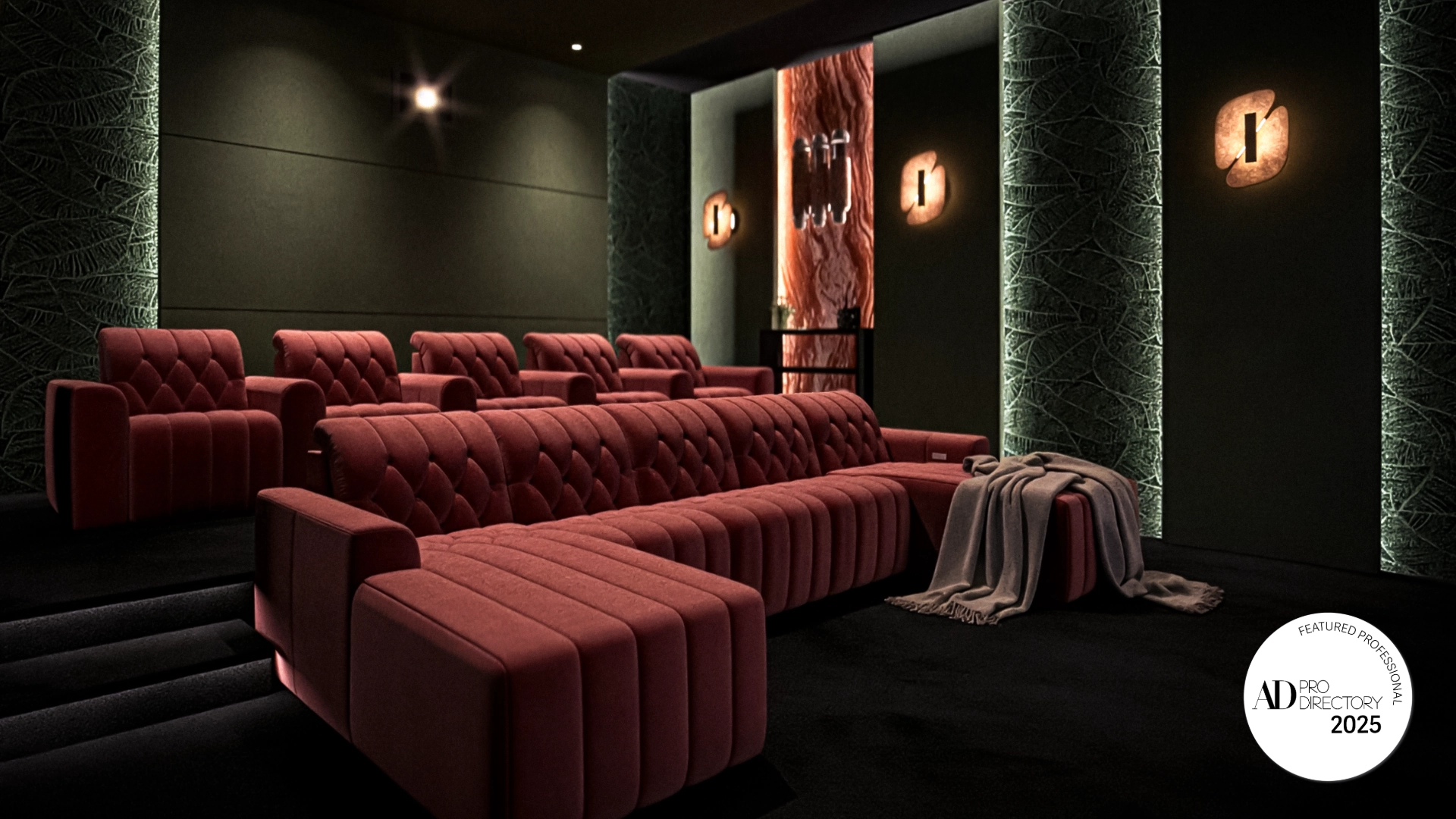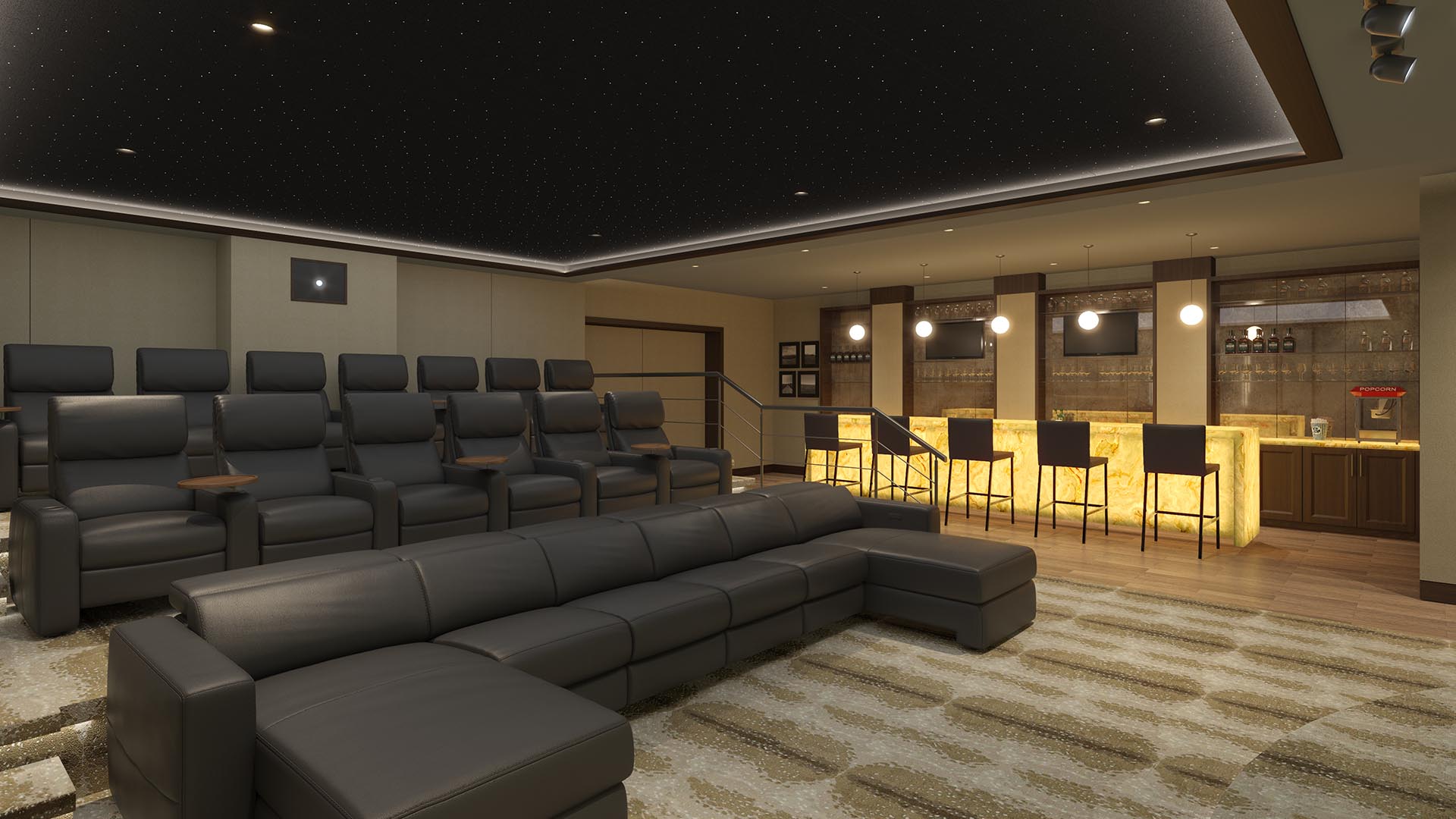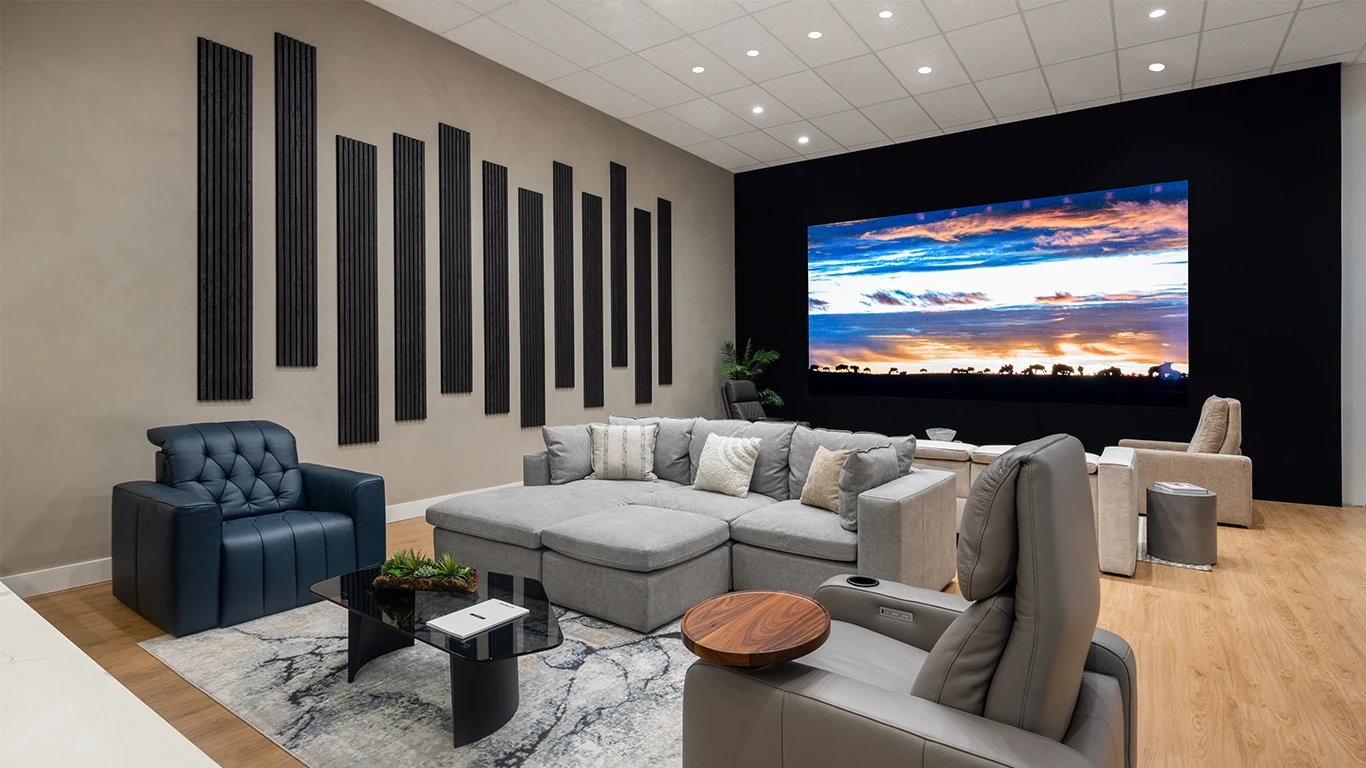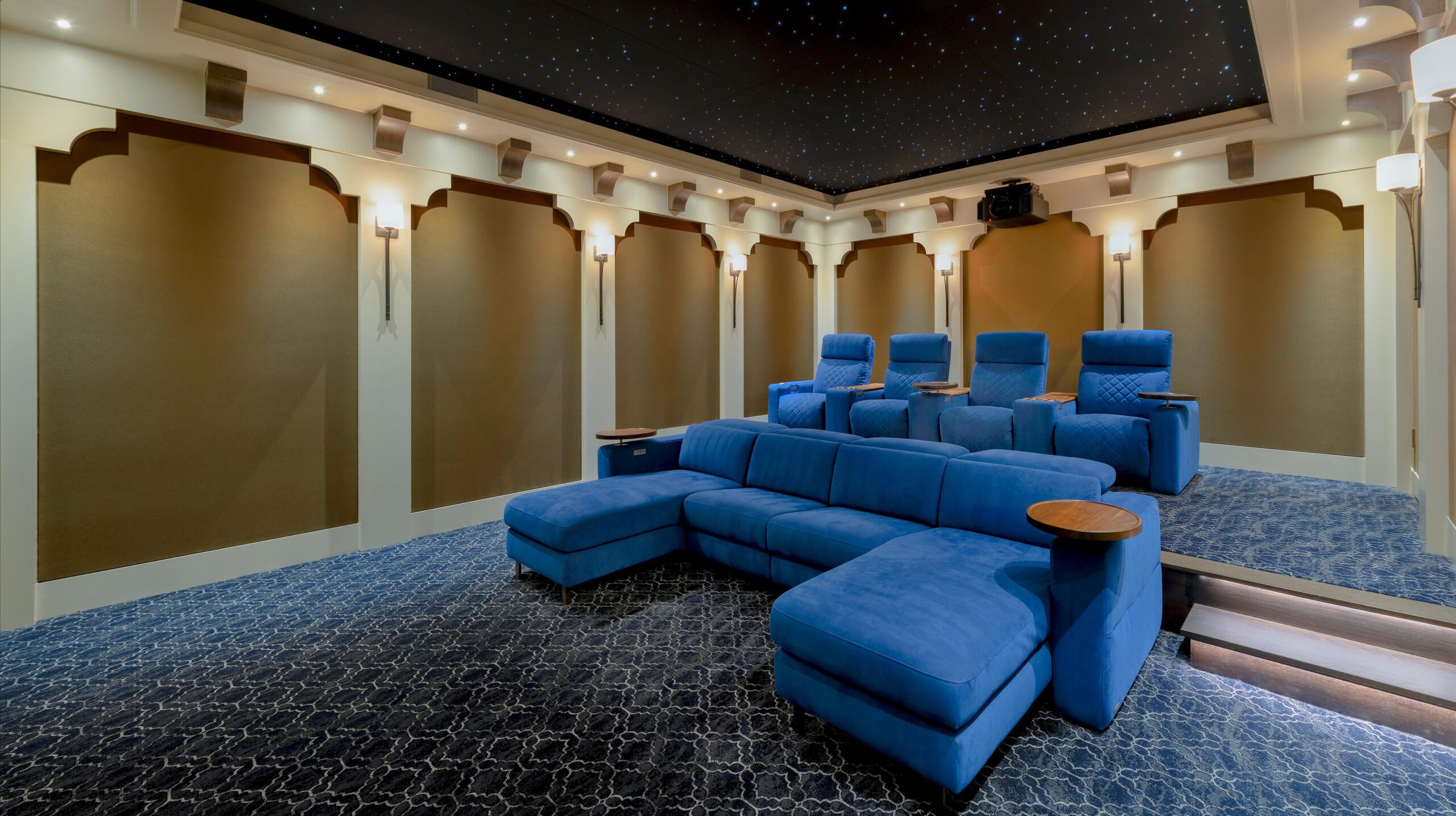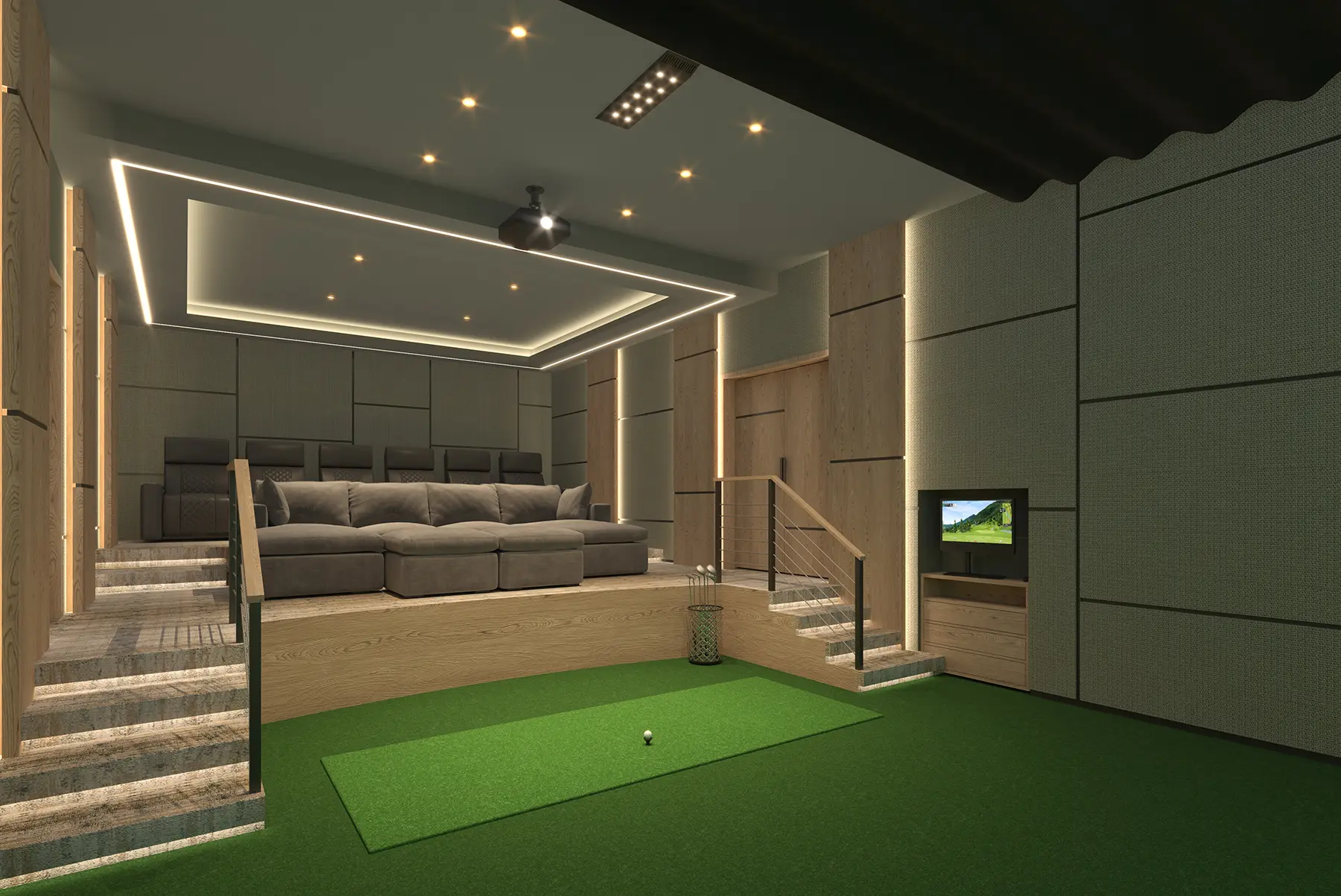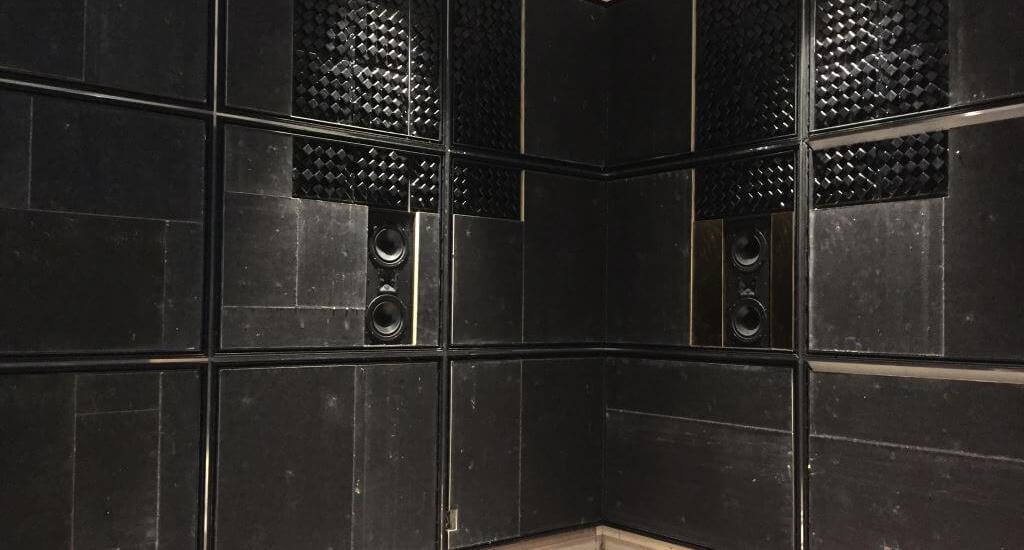
Any investment in home theater audio components, big or small, requires consideration for the space the equipment is placed into. Home theater room features such as the height of the ceilings, length of the walls, placement of seats and surrounding decor all play a part in acoustically treating a home theater. Even if you purchase the best audio equipment on the market, how the sound is delivered to the audience’s ears requires precise tuning in both the electronics and acoustic treatment panels. CinemaTech’s expertise in home theater acoustical treatment ensures that you maximize the investment in your audio equipment with a precisely tuned home theater experience. This guide on 7 must-know facts to acoustically treating a home theater will guide you to creating a world-class home theater experience.
1. What Is Acoustical Treatment
Have you ever walked into a room that was supposedly “acoustically treated” but felt like your ears were plugged? That’s the exact opposite experience a proper acoustically treated home theater should give you. Home theaters should be a place of enjoyment and fun experiences, not a place of constant struggle to decipher audio. When you acoustically treat a home theater, it should:
- Make the sound in the room bright, not dead
- Make speak perfectly audible
- Eliminate echoes and over-reactions of deep tones / boominess
- Make the room feel comfortable
- Improve sound isolation of the home theater
Essentially when you acoustically treat a home theater, you are applying absorbers, diffusers and reflectors to help give the room the desired acoustic (sound) characteristics.
2. Sound Isolation vs Acoustical Treatment
Did you know there was a difference in sound isolation and acoustically treating a home theater? Yup! Sound isolation is the use of materials and installation methods that reduce sound transmission to and from an environment. Whereas acoustically treating a room, such as a home theater, enables the space to have precise acoustic performance.
Can sound isolation and acoustical treatment be used at the same time in a home theater? Absolutely. Acoustical treatments for home theaters and sound isolation go hand-in-hand. For example, if you don’t want your perfectly tuned audio experience to escape the room and be heard across the house, isolating the sound with modern construction techniques allows you to do so.
Common practices when building a home theater, featuring sound isolating construction, includes the use of processes such as:
- Two layers of Sheetrock / QuietRock
- QuietSeal / Green Glue / Joist Tape used with Sheetrock and Quiet Rock
- Mass-loaded Vinyl Barriers
- Decoupling Walls & Ceilings
- Building a room within a room
- Hanging / floating Ceilings
- Separating & isolating the floor, risers, platforms and stages from the primary structure
- Sealing the weakest areas including vents and electrical sockets
- Sealing the door
While treating the interior home theater walls with acoustical panel helps with sound isolation, it’s not a complete solution to prevent sound from escaping.
3. Materials and Objects in the Space
One of the most fun parts of designing a home theater is finishing out the space with seating, wall applications, architectural elements and alike. However, if you’re wanting to get the best acoustic performance in the home theater, one needs to consider why, what and how they are placing these in the space. For example, adding too many soft surfaces in the space can counter-act the performance of the acoustical treatment. Similarly, placing seating in an un-organized manner, without consideration to the acoustical treatment or speaker location will not provide the optimum acoustical experience.
CinemaTech frequently sees applications in which the homeowner wishes to display memorabilia in their home theater. Why not – it’s a terrific place to showcase your achievements but, when displaying memorabilia is on your home theater wish list, you will want to consult the CinemaTech Home Theater Design team as to where and how to showcase your awards. Mounting signs on a wall, while visually appealing, could counter-act the acoustical treatment and even damage it.
4. Planning
This brings us to our next must-know-fact: planning. The biggest problem for a home theater is treating it as an after-thought and not properly planning for it before breaking ground. The construction of the home theater room will cost less or the same if it addressed at the beginning of the project versus cost-additions when modifications must be made. CinemaTech’s Home Theater Design Team finds that the client typically doesn’t know what they want the room to be, nor are they familiar with the current home theater technology or home theater design trends.
When planning for a home theater, whether a traditionally configured room or a multi-purpose flex-space, CinemaTech recommends deciding what the space is going to be used for, how many people will it fit and what the overall design of the room will be. These are significant contributors to how seating is arranged for the best acoustical performance.
5. Room Sizing
Can you create a big experience in a small space? Absolutely! However, what are the dimensions of that small space? If the room has bad sizing ratios, then certain frequencies will seem louder and other acoustic frequencies softer than they should. Sound moves around and resonates inside a room so how far it has to travel before hitting a surface and at what angle plays a large role in the final outcome. For example, if the intended room for your home theater is a cube (10’W x 10’H x 10’D) it will provide a less than desirable acoustic experience.
Let’s take a look at what not to do when sizing a room for a home theater:
- Designing it as a cube
- Curved walls or barrel vaults
- Large windows or doors
- A room that is wider than it is deep
If you’d like to know the dimensions for the best home theater experience, click here
6. Acoustically Transparent Fabrics
So you’ve got the best dimensions, arrangement, materials and acoustic treatment in the space, but how are you going to mask the acoustical treatment panels? Too often, we see walls cladded in fabrics that absorb sound rather than let it pass through to the acoustic treatment. Fabrics such as velvet, leather, suede or similar work great on seating surfaces, but not on vertical surfaces to cover home theater acoustical panels or the speakers.
Using acoustically transparent fabrics allows the sound to be passed through to the acoustical panels, so they can perform as designed. Two quick ways to see if a fabric is acoustical transparent for home theater use is to:
- Hold the fabric up to a light and see if light can shine through.
- Breathe through the fabric and see if air can come out easily on the other side.
7. Not All Acoustical Treatments Are Equal
You’ve seen them – the obvious obtrusive panels mounted to a wall in a home theater to help with acoustical treatment. While many times this is the budget-friendly option, it frequently does more harm than good to the home theater. Fabric-wrapped panels, applied proud of the wall, have a tendency to over-dampen the room and provide a limited frequency response – typically 500Hz and above. Similarly, they offer little flexibility to tune a room to different conditions.
CinemaTech has found a significant amount of audio is removed from the experience with traditional fabric wrapped panels. Engineered wall systems, like ARS from CinemaTech is a solution that provides exceptional low, mid and high frequency ranges, down to 100Hz of acoustical performance. These systems, since they are custom to each home theater, are precisely tuned to a room’s design or usage. Because of its track-based system, guests in the space focus their attention to the content on the screen or the people they are with, not the obtrusive panels mounted to the wall.
Creating the best experience in any home theater is much more than just having the best equipment. Would you believe that many home theaters are used only once or twice in their lifetime? It’s true! We frequently hear stories of homeowners who invested in a home theater experience only to rarely use it because of poor acoustics and difficulty hearing.
An acoustically treated space from CinemaTech is a delight. Investing in home theater acoustical treatment, precisely tuned to your environment, enables legendary experiences and life-long memories.
